‘’Trad routes have more layers than sport climbing. You have to work with what nature has given you’’ – Steve McCLure.
Trad climbing, in its essence, is the purest form of rock climbing with a rope. It invites you to approach any rockface on the planet armed with your trusty trad rack.
The complexity of trad climbing is not solely in the physical domain; it is a mental and analytical game, where the next placement might be a daunting ten meters away. This discipline is a crucible, testing your judgment, your skill in gear placement, and your ability to manage risk.
Yet, it is precisely this aspect of risk, challenge, and the raw purity of climbing that attracts people to trad climbing.
| Route | Grade | Date of FA | Country | Climber |
|---|---|---|---|---|
| Tribe | 9a/5.14d | 2019 | Cadarese, Italy | Jacopo Larcher James Pearson |
| Bon Voyage | E12 | 2023 | Annot, France | James Pearson Adam Ondra |
| Rhapsody | E11 7a | 2006 | Dumbarton Rock, Scotland | Dave McLeod Sonnie Trotter Steve McClure James Pearson Gerome Pouvreu |
| Echo Wall | E10 | 2008 | Ben Nevis, Scotland | Dave McLeod |
| Blackbeard’s Tears | 5.14c | 2016 | Redwood Coast, U.S.A. | Ethan Pringle |
| Meltdown | 5.14c | 2008 | Yosemite, USA | Beth Rodden, Carlo Traversi |
| Pura Pura | 5.14c | 2014 | Valle dell’Orco, Italy | Tom Randall |
| Recovery Drink | 5.14c | 2013 | Jossingford, Norway | Nico Favresse, Daniel Jung |
| Magic Line | 5.14b/c | 1996 | Yosemite, USA | Ron Kauk, Lonnie Kauk, Hazel Findlay, Carlo Traversi |
| Century Crack | 5.14b | 2011 | Canyonlands, USA | Tom Randall, Pete Whittaker, Danny Parker |
| Cobra Crack | 5.14b | 2006 | Squamish, Canada | Sonnie Trotter, Nico Favresse, Ethan Pringle, Matt Segal, Will Stanhope, Yuji Hirayama, Alex Honnold, Pete Whittaker, Tom Randall, Ben Harnden, Mason Earle, Logan Barber, Said Belhaj |
| Family Man | 5.14b | 2014 | Skaha, Canada | Sonnie Trotter, Ben Harnden |
| Lapoterapia | 5.14b | 2015 | Osso, Italy | Alessandro Manini, Gabriele Moroni, Jacopo Larcher |
| The Bull | 5.14b | 2022 | Squamish, Canada | Jeremy Smith, Ben Harnden |
| The Dawn Wall | 5.14b (trad) 5.14d (sport) | 2015 | Yosemite, USA | Tommy Caldwell, Kevin Jorgeson, Adam Ondra |
How Do You Judge Hard Trad?
When it comes to evaluating the difficulty of a trad climbing route, the criteria diverge significantly from those applied to sport climbing. In sport climbing, the focus tends to be on the physical and technical demands of the route as a whole or on a particularly challenging section known as the crux. Trad climbing, however, introduces an additional, critical dimension to the assessment: the element of risk and gear placement.
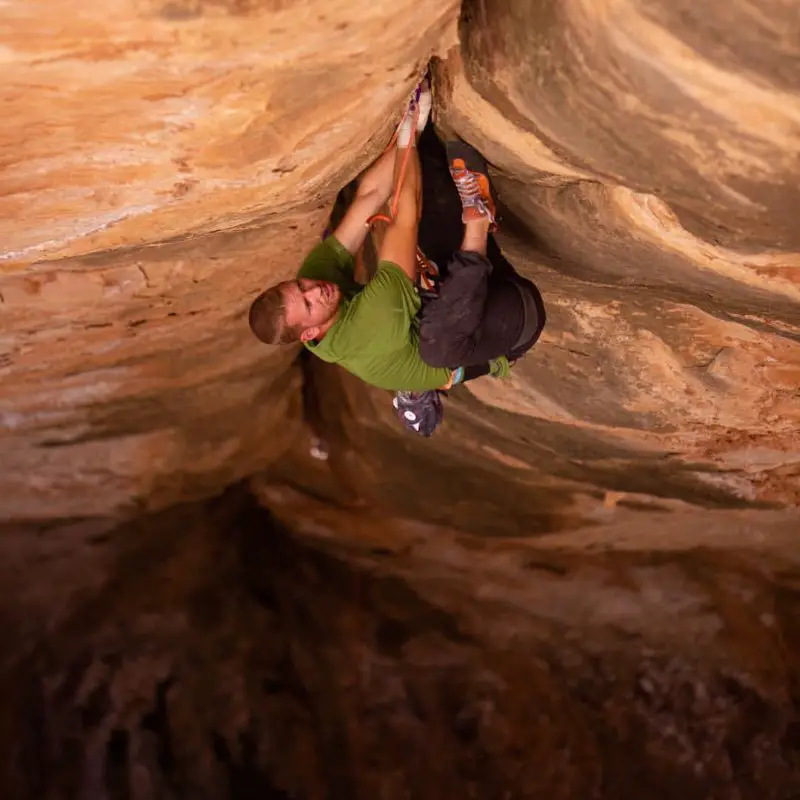
Consider a trad route with a grade of 6a/5.10b. At first glance, this might suggest a relatively accessible challenge, perhaps suitable for beginner trad climbers. The grade may indicate the technical difficulty, suggesting a climb with ample opportunities for placing gear, and by extension, a route that is well-protected against falls.
However, the introduction of an “R” rating to the same grade transforms the nature of the climb entirely. This 6a/5.10b route, now marked with an “R” for Runout, tells a different story. The technical moves might remain unchanged, with plenty of holds to progress upwards, but the significant gaps between secure gear placements elevate the psychological stakes.
The climb is no longer just about physical ability. The unchanged technical grade belies the increased complexity of the climb, where the “R” rating signals a journey through more exposed terrain, demanding a climber’s utmost concentration and nerve.

British Trad Grade
We can’t talk about trad without addressing the elephant in the room, British trad grades. The most controversial grades of all.
The British E grade system is a unique grading system used primarily in the UK for grading traditional rock climbing routes. Unlike many other grading systems that focus solely on the technical difficulty of the hardest move, the E grade system takes into account several factors, including:
Technical Difficulty: The physical and technical challenge of the hardest move or sequence on the route.
Exposure: The psychological challenge posed by the route’s height and its positions.
Protection Quality: The availability, quality, and spacing of natural protection (like nuts and cams) that climbers can place and remove as they ascend. This factor significantly influences the perceived risk of injury in the event of a fall.
Sustained Difficulty: How sustained the climbing is at its grade level, meaning how consistently difficult the climbing is throughout the route.
The Overall environment: The approach to the wall, the quality of the rock, the risk of falling.
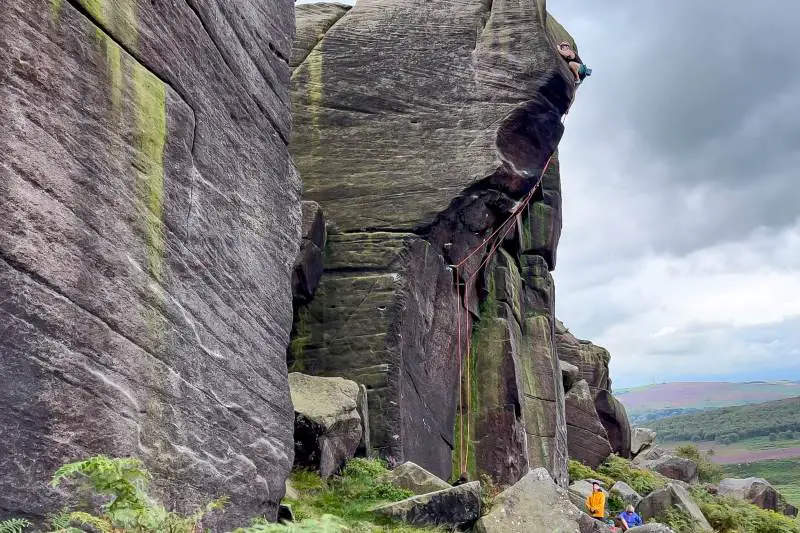
The E grade system starts at E1 and goes up, with each increase in number indicating a step up in the overall challenge. For example, an E2 route would be more challenging than an E1 route, taking into account all the factors mentioned above. Within each E grade, routes are also given a technical grade (such as 5a, 5b, etc – not to be confused with the French grading system), that more specifically describes the hardest move or sequence on the route.
However, the E grade is more indicative of the overall experience, including how mentally taxing or dangerous a route might feel due to exposure and the quality of protection.
I’m not saying that the British trad grading system is how all trad should be graded, but it paints a better picture of the difficulty and risk of the route.
The WideBoyz explain this a lot better than I given their extensive experience with trad:
Hardest Trad Routes in the World
The world is not short of hard trad routes, but here are some of the hardest routes that only few dare to try.
Bon Voyage
First Ascent: James Pearson
James began trying Bon Voyage in 2021 and took him more days than any other one of his projects. He spent 20 days across 2 years trying the route.
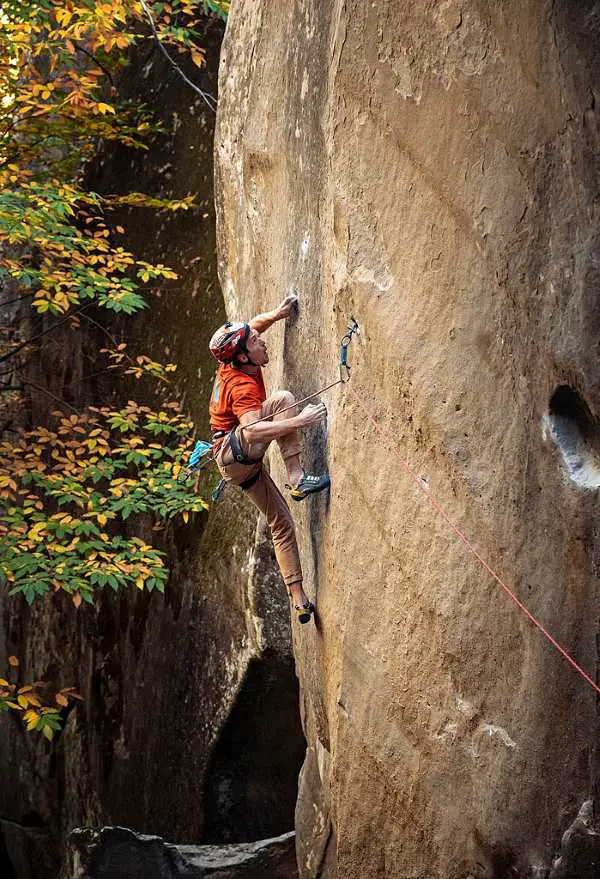
He finally sent the route in 2023 but refused to give it a grade even though he said it was one of the hardest trads he’s done. The high grading of Walk of Life from 2008 still haunted him, where Dave MacLeod downgraded his E12 to an E9. The online abuse from the climbing community was so big, James fled the country and settled in Europe.
After 10 months he had a fu*k it moment and announced a grade of E12. Partly because he watched some of the greatest trad climbers in the world try it and fail.
Adam Ondra then came along and sent it in 3 days citing in his Instagram, ‘’The route felt challenging in many different ways, and apart from being very runout (but probably safe) it had some very hard moves.’’
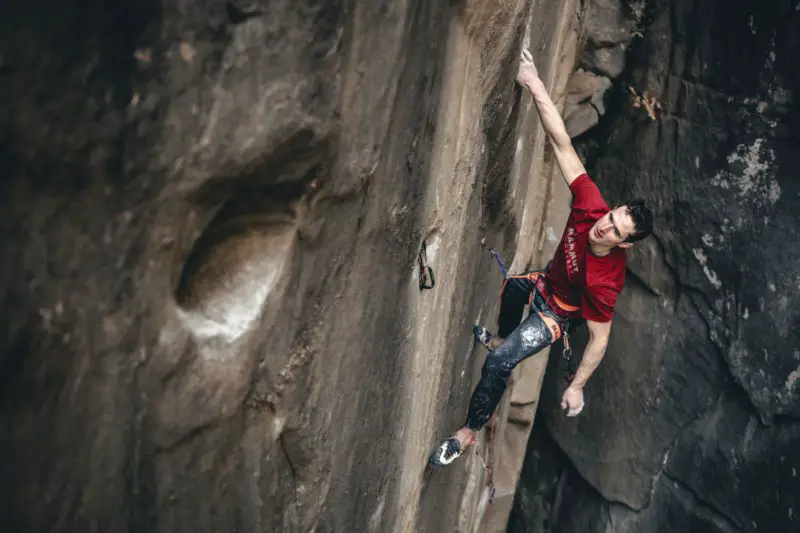
Rhapsody
First Ascent: Dave McLeod
Rhapsody was the first E11 in the world and was a long-standing project for Dave McLeod. The top section is an 8c+ climb with no opportunities to place any protection, making the route extremely run out.

The crux sequence, and the last few moves of the route, are so physically demanding that MacLeod fell over 9 times, leading to a nerve-racking 20+ meter fall onto an RP nut, the smallest nut on the market.
Echo Wall
First Ascent: Dave MacLeod
Dave MacLeod is the best trad climber of all times. He has the most experience with hard British trad out of anyone else and has put up first ascents in a lot of the higher E grades. Dave did the first E8, E9, E10 and E11 in Scotland, so when it comes to trad, he has a lot to say.
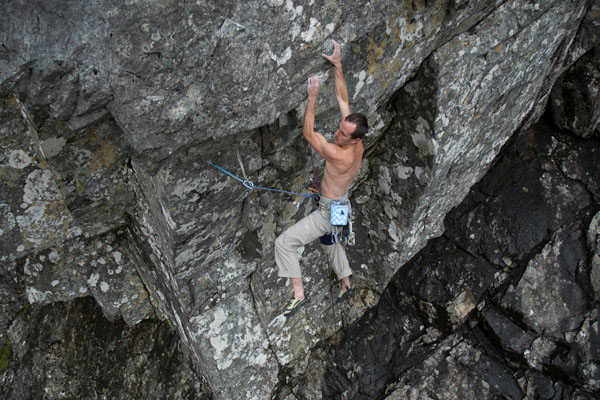
Anyway, Echo Wall was put up by Dave in 2007 and if you know anything about it is that it’s really hard. He left it ungraded, but he recently said it might be an E10 even though at the time it felt harder than Rhapsody.
Tribe
First Ascent: Jacopo Larcher
After six years of relentless effort, adapting to the rock’s natural lines without altering its essence, he made the first ascent in 2019. He left it ungraded, but it seems to be around the realm of 5.14d/5.15, which would make it the hardest trad yet.
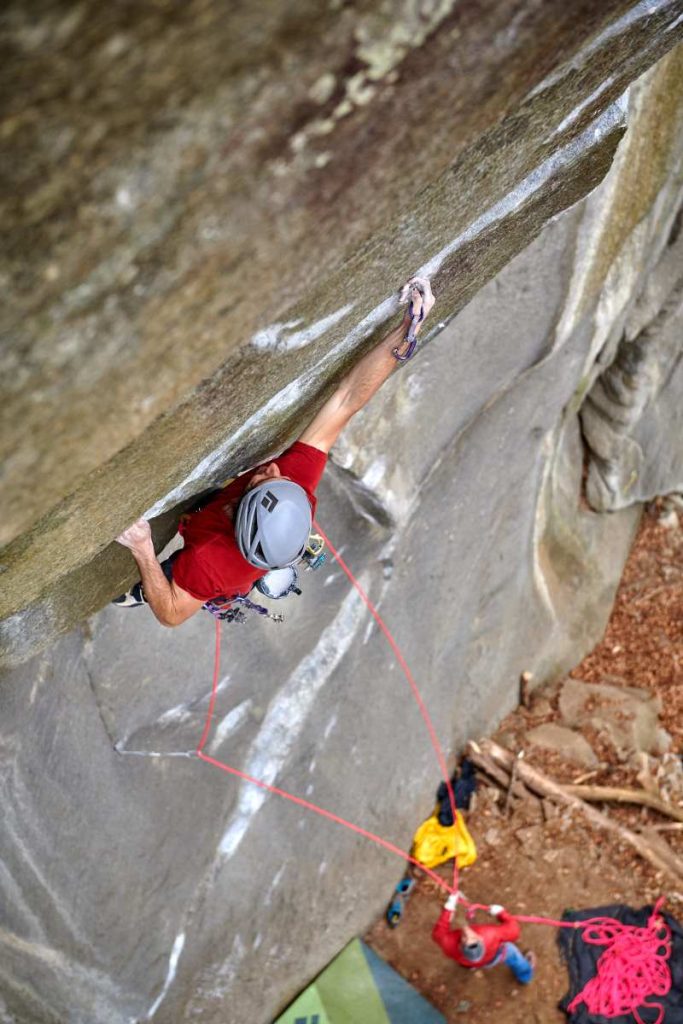
Is There Such a Thing as E12?
I’m going to leave you with Dave McLeod’s video on how he grades trad and you can decide for yourself if E12 exists or not.



